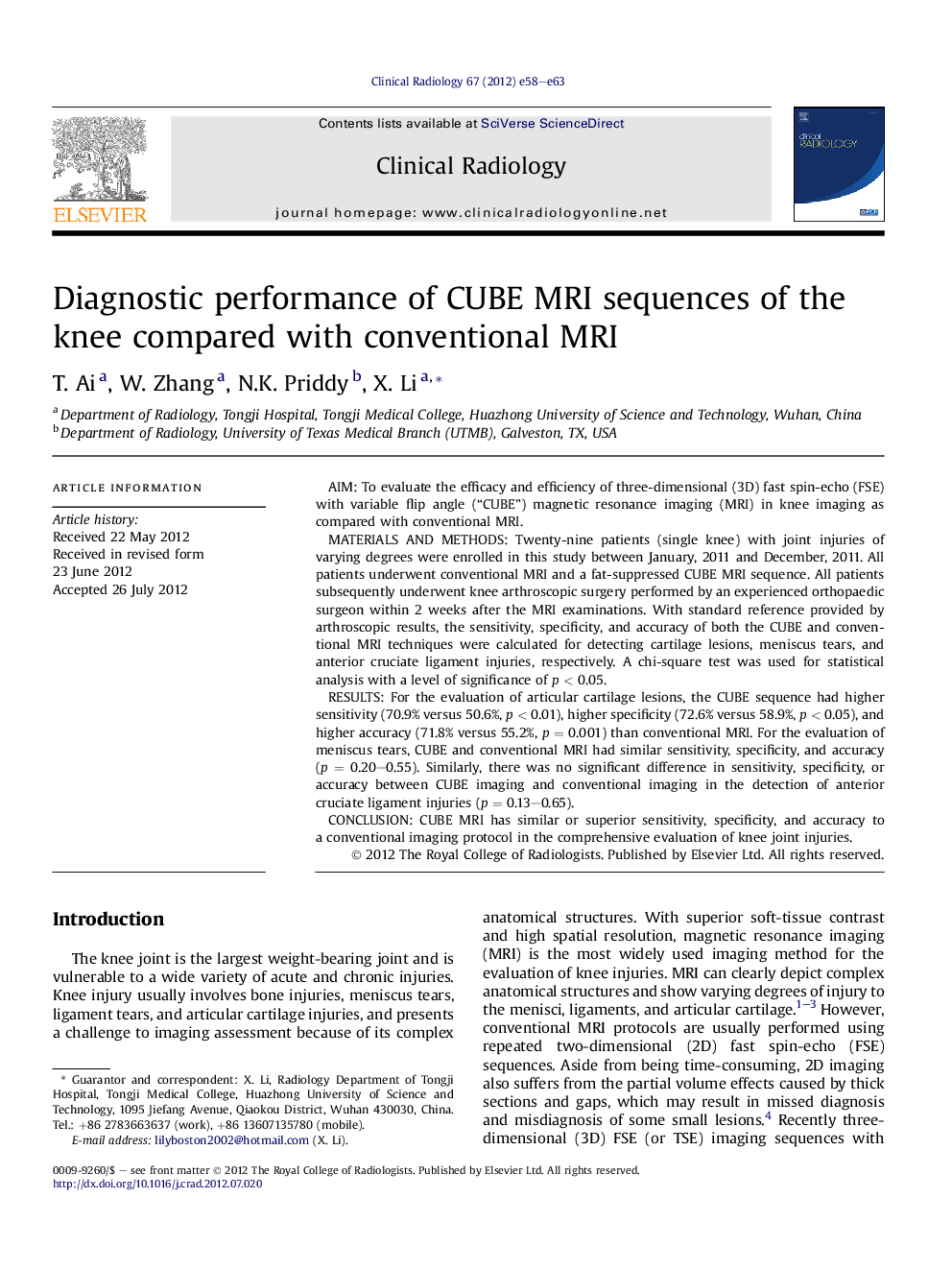| Article ID | Journal | Published Year | Pages | File Type |
|---|---|---|---|---|
| 3982874 | Clinical Radiology | 2012 | 6 Pages |
AimTo evaluate the efficacy and efficiency of three-dimensional (3D) fast spin-echo (FSE) with variable flip angle (“CUBE”) magnetic resonance imaging (MRI) in knee imaging as compared with conventional MRI.Materials and methodsTwenty-nine patients (single knee) with joint injuries of varying degrees were enrolled in this study between January, 2011 and December, 2011. All patients underwent conventional MRI and a fat-suppressed CUBE MRI sequence. All patients subsequently underwent knee arthroscopic surgery performed by an experienced orthopaedic surgeon within 2 weeks after the MRI examinations. With standard reference provided by arthroscopic results, the sensitivity, specificity, and accuracy of both the CUBE and conventional MRI techniques were calculated for detecting cartilage lesions, meniscus tears, and anterior cruciate ligament injuries, respectively. A chi-square test was used for statistical analysis with a level of significance of p < 0.05.ResultsFor the evaluation of articular cartilage lesions, the CUBE sequence had higher sensitivity (70.9% versus 50.6%, p < 0.01), higher specificity (72.6% versus 58.9%, p < 0.05), and higher accuracy (71.8% versus 55.2%, p = 0.001) than conventional MRI. For the evaluation of meniscus tears, CUBE and conventional MRI had similar sensitivity, specificity, and accuracy (p = 0.20–0.55). Similarly, there was no significant difference in sensitivity, specificity, or accuracy between CUBE imaging and conventional imaging in the detection of anterior cruciate ligament injuries (p = 0.13–0.65).ConclusionCUBE MRI has similar or superior sensitivity, specificity, and accuracy to a conventional imaging protocol in the comprehensive evaluation of knee joint injuries.
